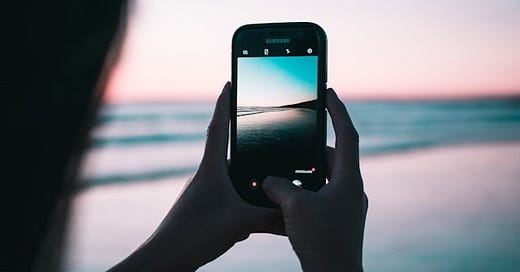There’s A Reason Our Phones Are Clogged With Photos
Today's smartphones have given us a new way to tell our stories
I visited Yosemite last Fall after a lengthy absence, and it was as stunning an experience as I had anticipated. Afterward, I texted some of my photos to a friend I knew was planning to visit the Park. He replied that he had made the trip recently and sent me several photos from his visit. I had to laugh when I realized that both his and my texts contained nearly identical snapshots of some popular sights.
I suspect they are similar to most of the photographs taken by the nearly four million people who visited Yosemite last year, adding to the millions of unremarkable snapshots of truly breathtaking sights.
It got me thinking about why we do this.
By this, I mean feel compelled to document our experiences and share them rather than settling into the moment to savor the sheer pleasure of the experience itself. Afterall, in the case of Yosemite, there are ample opportunities to purchase copies of the spectacular photography available, such as the iconic work of Ansel Adams and other talented photographers.
But that would not make the statement we intend.
I believe our goal is far more personal than that: to tell our stories.
Today’s smartphone photographs and videos are, in a sense, a new language of images that, while seemingly random and fragmented in nature, over time serve to form the narrative of our lives.
This most often plays out on social media but can assume many forms including simply passing around our phones to others.
Consumer culture requires shared experiences; without a community with which to share our experiences they're nearly meaningless, at least in the context of our role as consumers which, after all, shapes a large part of our identity for many.
Modern smartphones, which for most of us are constantly within reach, are the perfect tool for this, reinforcing both how we see ourselves and how we wish to be seen.
We share the photographs documenting our experiences for many reasons: to claim status, to assert our values, to say that we are both loving and loved, to be seen as individuals, to recognize our achievements, to claim participation in a community or group – the reasons are as numerous as they are varied.
I’ve discussed that in consumer culture, all goods carry meaning and serve as a form of communication. Similarly, photographs and videos enable us to convey meaning by creating a narrative of our experiences and relationships, so even something as casual as photographing a meal we enjoyed for posting on social media can communicate aspects of our identity and define how we wish to be perceived by the people and groups most important to us. Nor is this a new idea; past generations sent letters and postcards for much the same purpose.
All photographs and videos have intention and purpose, even the most random or spontaneous, whether we realize it or not.
So when we complain about the number of photos that have accumulated on our phones, we can think of them as more than digital clutter. They are pieces of us and the stories we have to tell about ourselves. They speak to who we are, what we value, and how we fit into the world.




